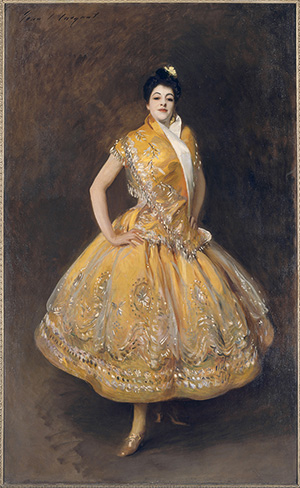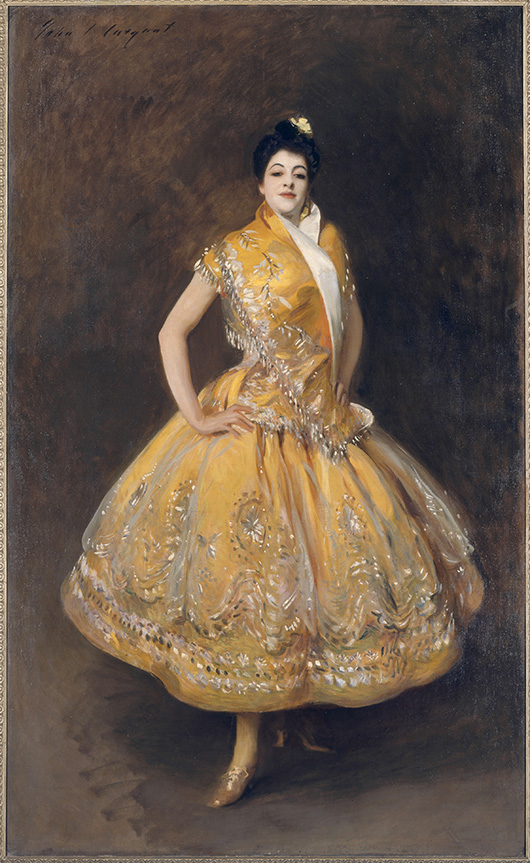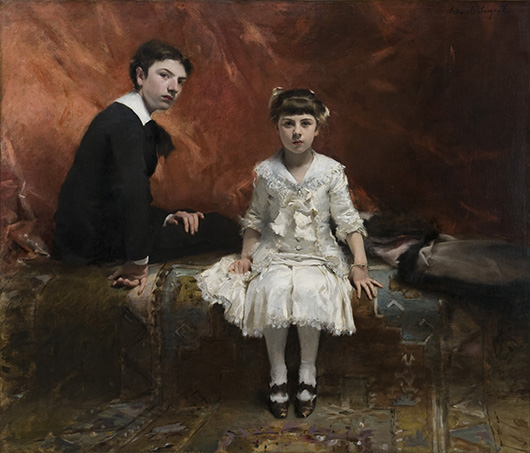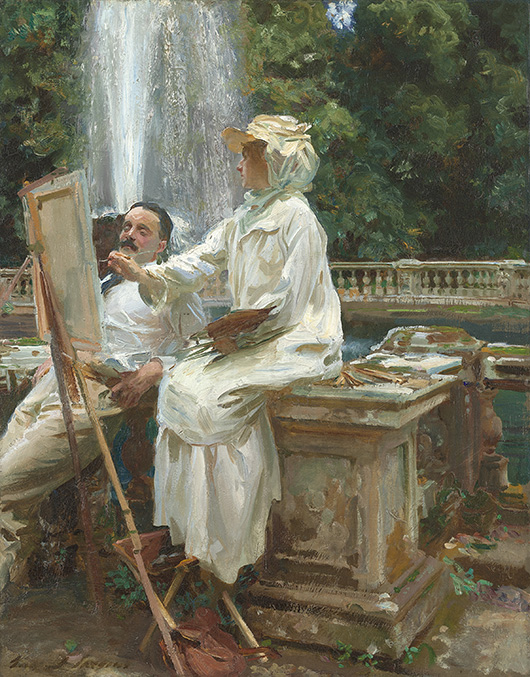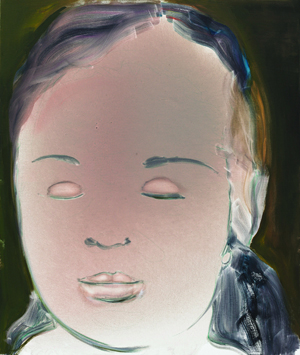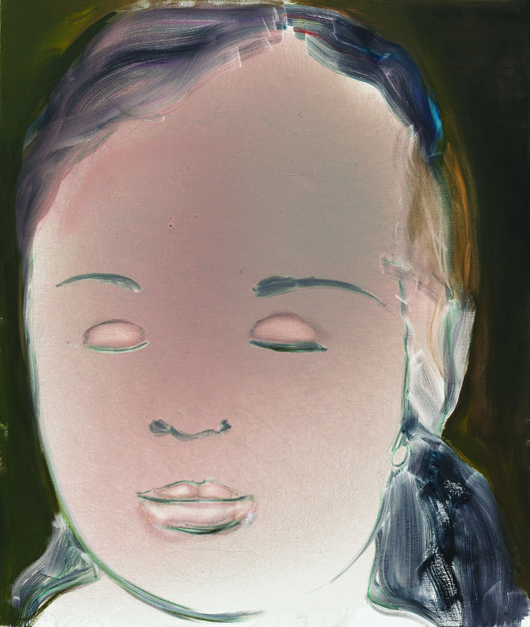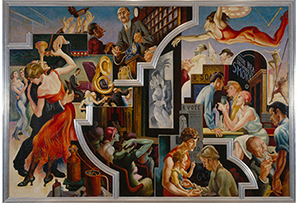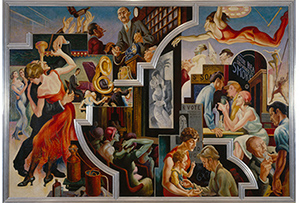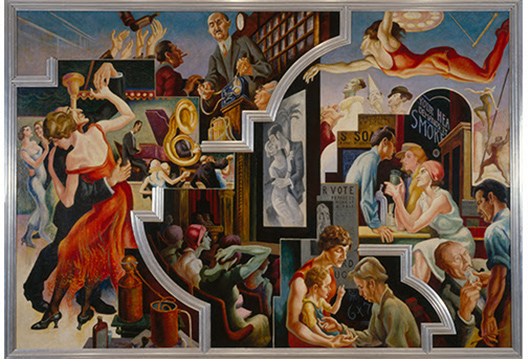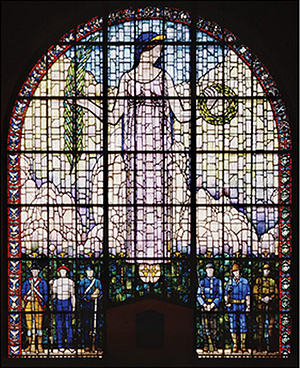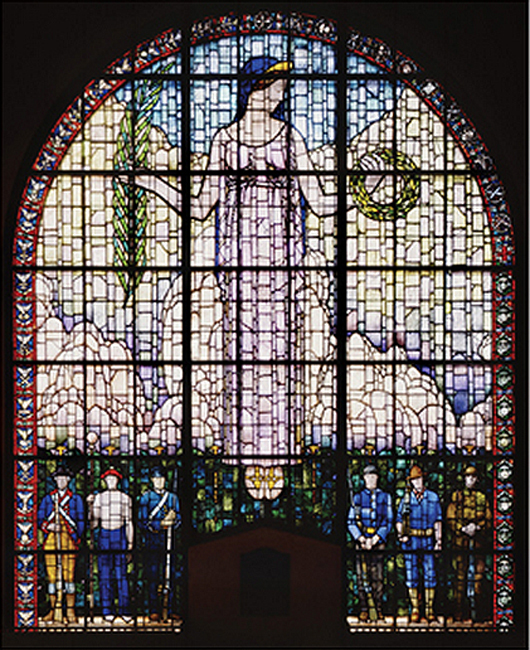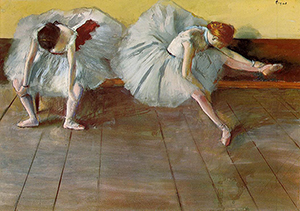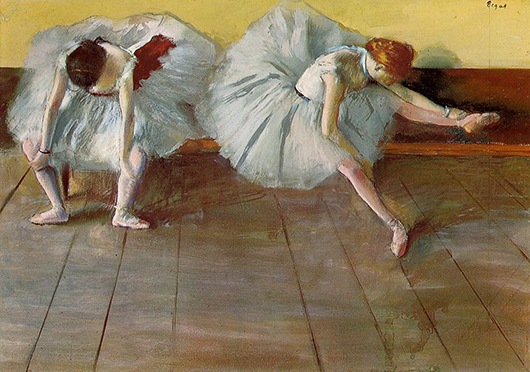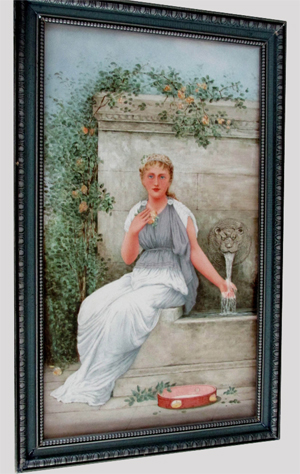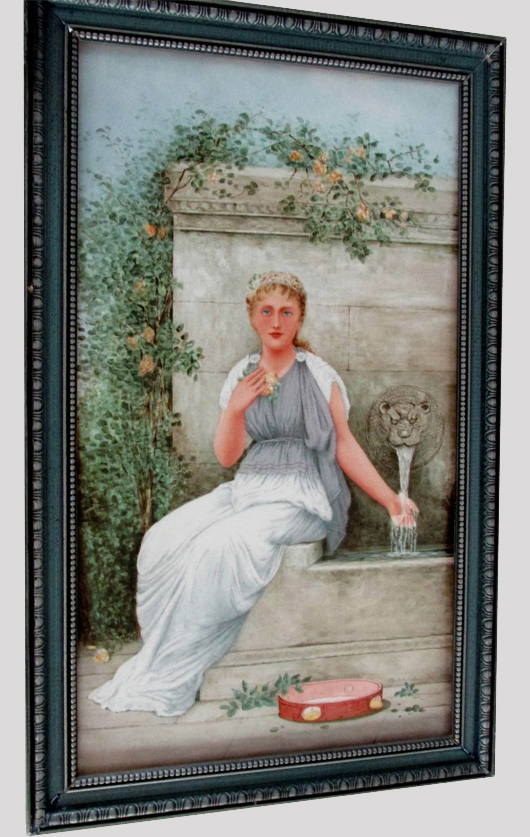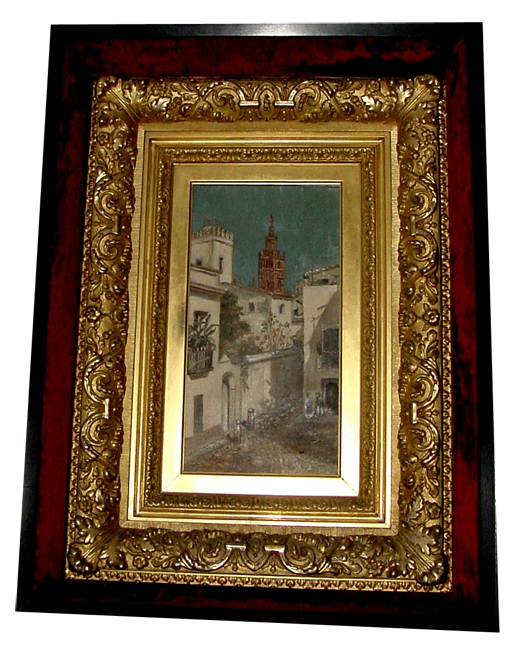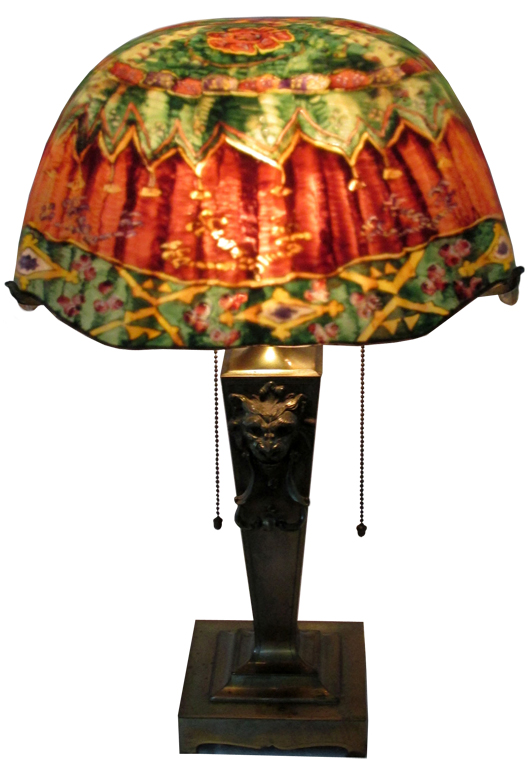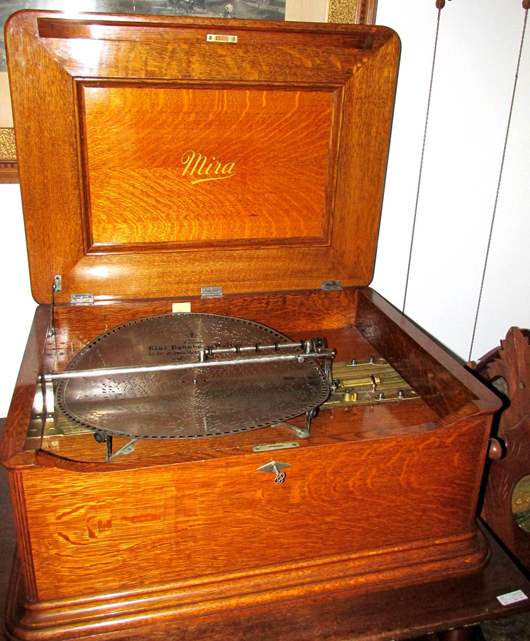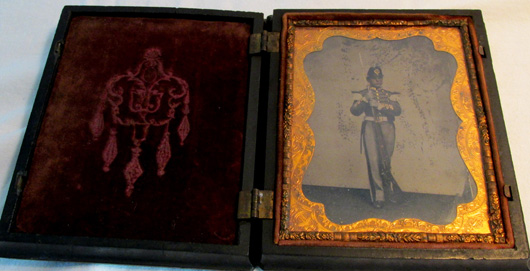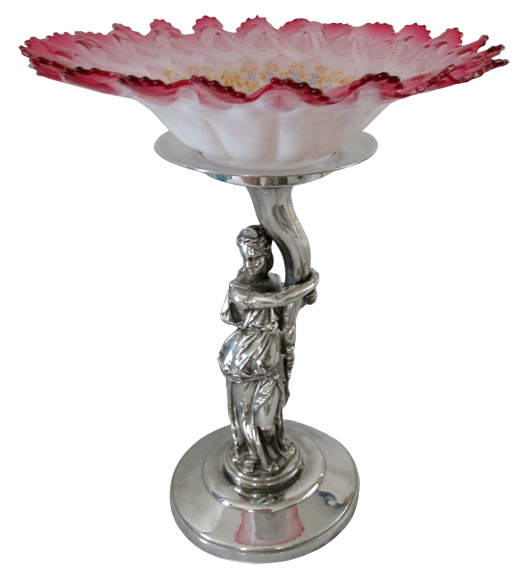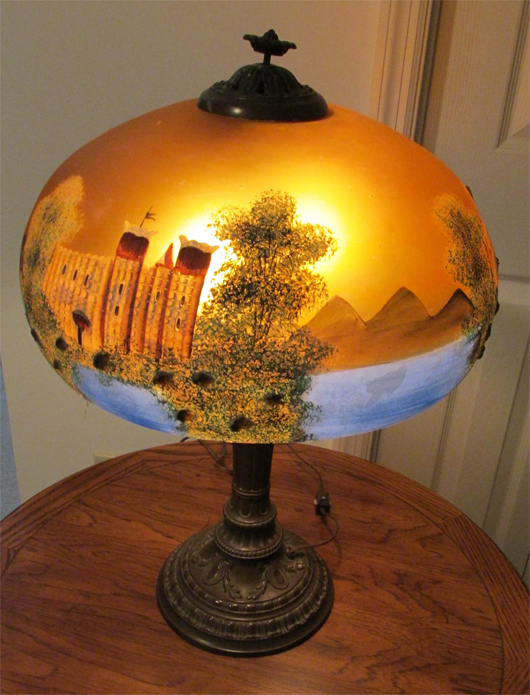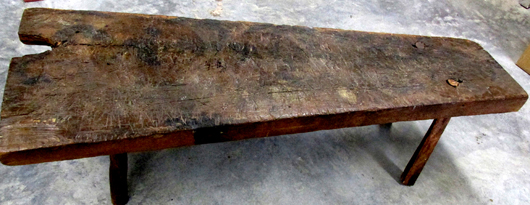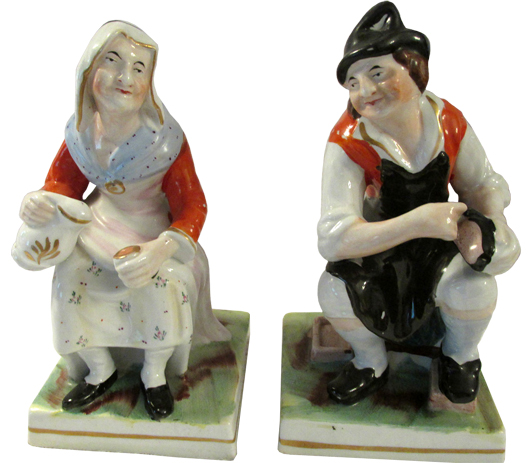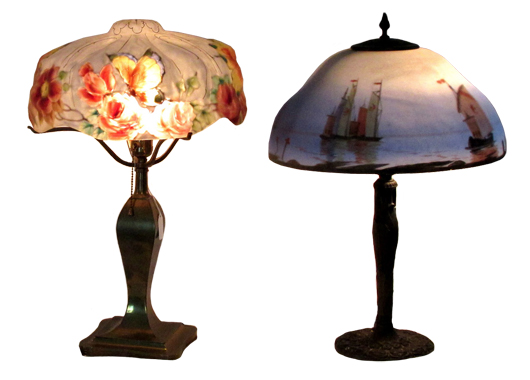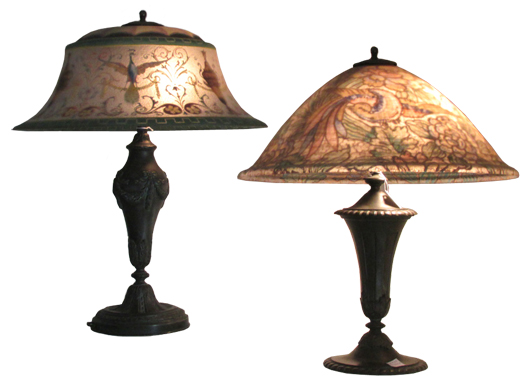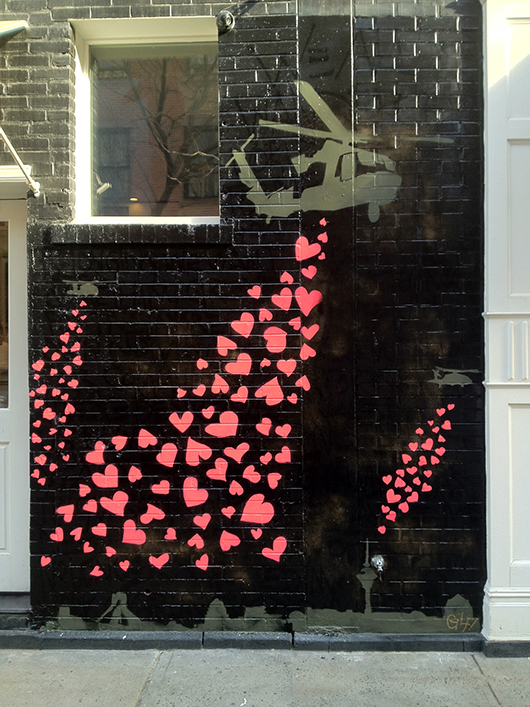Pomo burden basket, $23,000, Allard Auctions

A large Pomo burden basket sold for $23,000 at the “Best of Santa Fe” Indian art auction held Aug. 16-17 by Allard Auctions in Santa Fe, N.M. Also, a beautiful Yokuts basket by Florence Jacobs Harrie and an historic Yokuts basket by Waysheemlet each went for $5,750; a Charles Loloma buckle changed hands for $6,325; a unique Yei figured rug fetched $5,175; a Fannie Nampeyo olla garnered $4,885; and a figured Wasco sally bag filled with traditional figures such as condors, deer and sturgeon made $4,313. Prices include a 15 percent buyer’s premium.
Edouard Cortes work, $24,400, Crescent City
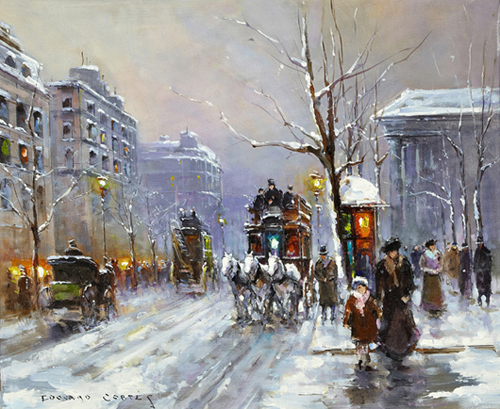
An original oil on canvas painting by the French artist Edouard Leon Cortes (1882-1969), titled Winter Place de la Madeleine (1942), sold for $24,400 at an estates auction held Sept. 20-21 by Crescent City Auction Gallery in New Orleans. Also, a 14K white gold diamond link necklace, with each of the 102 links having a graduated round diamond, realized $13,035; and a watercolor work by Blanche Nettie Lazzell (W.Va., 1878-1956), titled Abstraction (1936), went for $7,380. Prices include a sliding scale buyer’s premium.
Fernando Amorsolo oil, $100,725, James D. Julia

An original oil painting of laborers working the rice fields in the shadow of a distant volcano by Philippine artist Fernando Amorsolo sold for $100,725 at an antiques and fine art auction held Aug. 19-22 by James D. Julia Inc., in Fairfield, Me. Also, Montague Dawson’s marine portrait of a tall ship in full sail on white-tipped green waves realized $74,062; a rendering of Ernest Hemingway by Waldo Peirce breezed to $53,325; and a late 19th century copper weather vane from a large collection reached $47,400. Prices include an 18.5 percent buyer’s premium.
19th century carved eagle, $1,989, Copake Auction
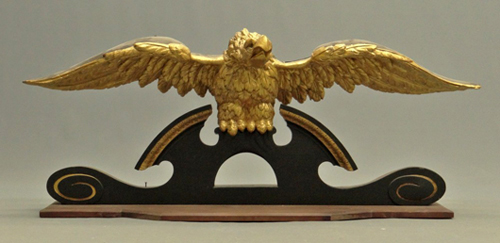
A 19th century carved and gilded pilot house eagle sold for $1,989 at an unreserved estate auction held Aug. 23 by Copake Auction in Copake, N.Y. Also, a Cubist abstract painting signed “LRC” for the Hungarian artist Gyarmathy Tihamer (1915-2005) hammered for $1,638; a 19th century New England farm table in original red paint realized $1,755; and an adjustable hickory Adirondack glider fetched $1,404. Prices include a 17 percent buyer’s premium.
14K white gold bracelet, $32,400, Morphy Auctions
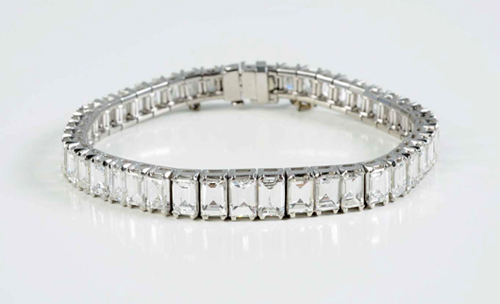
A 14K white gold tennis bracelet with 46 emerald-cut diamonds sold for $32,400 at a fine and decorative arts auction held Aug. 30-31 by Morphy Auctions in Denver, Pa. Also, a ladies’ ring with cabochon-cut jadeite center stone surrounded by 46 tapered baguette diamonds totaling 5.08 carats went for $31,200; an R.W. Martin & Brothers Wally Bird tobacco jar, signed, 6 1/2 inches tall, changed hands for $25,200; and a Swiss-made Ami Rivenc six-cylinder orchestral music box (circa 1885-1890), also turned $25,200. Prices include a 20 percent buyer’s premium.
Birger Sandzen painting, $43,125, Manitou Auctions
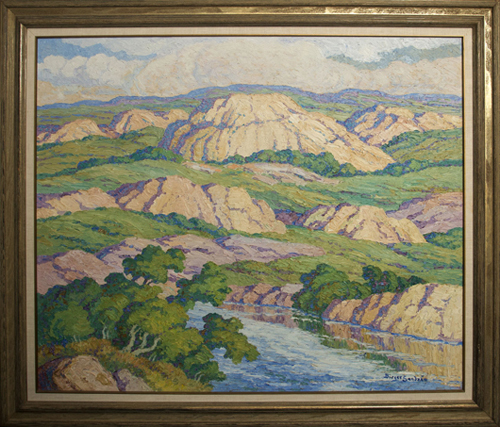
An original oil on board painting by Birger Sandzen (1871-1954), titled Kansas Landscape, sold for $43,125 at an annual auction held Aug. 17-18 by Manitou Auctions in Santa Fe, N.M. Also, a C.C. Starr sterling silver parade saddle made circa 1930s, with engraved initials “MTM,” brought $7,375; a circa-1890 Zuni storage jar, 11 inches tall, changed hands for $10,285; a circa-1930s Panamint basketry bowl with zigzag geometric designs made $3,933; and a circa-1920 Navajo sand painting weaving rose to $5,143. All prices quoted include the buyers premium.
Brian Coole oil on board, $19,800, Kaminski Auctions

An original oil on board painting by the English-born American artist Brian Coole (b. 1939), titled Boston From Chelsea Shore, sold for $19,800 at an auction held Aug. 24 by Kaminski Auctions in Beverly, Mass. Also, a circa-1920 Provincetown, Mass., seascape by Albro T. Hibbard hit $10,800; James Fulton Pringle’s Ship Under Sail shoved off for $7,800; an oil on canvas depiction of waves crashing on rocks by Charles H. Woodbury brought $3,900; and a Ming dynasty Buddha, 35 inches tall, made $8,400. Prices include a 17 percent buyer’s premium.
Pair of Chinese porcelain vases, $1.2 million, Doyle New York
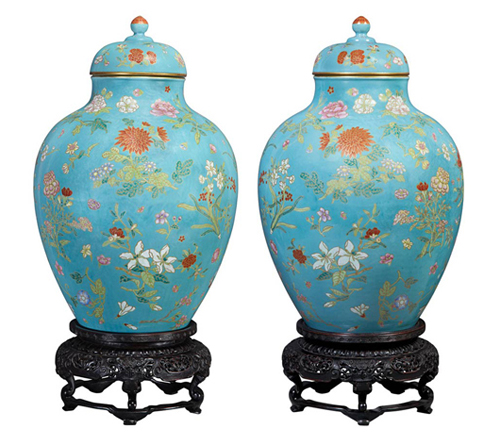
A pair of 19th century Chinese famille rose glazed porcelain covered vases, measuring 16 inches in height and bearing the Qianlong seal mark, sold for $1.2 million at an Asian works of art auction held Sept. 15 by Doyle New York in Manhattan. Also, a pair of 19th century white jade chrysanthemum-shaped bowls, 6 7/8 inches in diameter, realized $100,000; a large zitan table fetched $93,750; and a Qing Dynasty agarwood scepter, 17 1/2 inches long, elaborately carved as a fruiting gourd vine, finished at $81,250. Prices include a 20 percent buyer’s premium.
Nazi paratrooper rifle, $299,000, Rock Island

A World War II fully automatic Class III Nazi Krieghoff FG42 paratrooper sniper rifle with highly desirable accessories, such as a ZF4 sniper scope, the original mount, a grenade launcher and spike bayonet, sold for $299,000 at a premiere firearms auction held Sept. 12-14 by Rock Island Auction Co. in Rock Island, Ill. Also, a Walker’s C Company marked U.S. contract Colt Walker model 1847 revolver went for $161,000; and a Winchester third model 1866 lever action carbine hit $92,000. Prices include a 15 percent buyer’s premium.
Myochin School iron snake, $37,500, Rago Arts & Auction

A Myochin School iron articulated snake sold for $37,500 at an auction held Sept. 12-14 by Rago Arts & Auction Center in Lambertville, N.J. Also, a bronze sculpture after Evgeny Alexandrovich Lanceray, titled Falconer, rose to $20,000; a French champleve clock and barometer garniture breezed to $15,000; a Japanese Meiji sterling tea and coffee service brought $13,750; a Paul Jouve etching on paper titled Walking Panther made $13,750; and a Christofle silver-plated centerpiece hit $13,750. Prices include a 25 percent buyer’s premium.
Konrad Cramer oil, $9,000, Hudson Valley
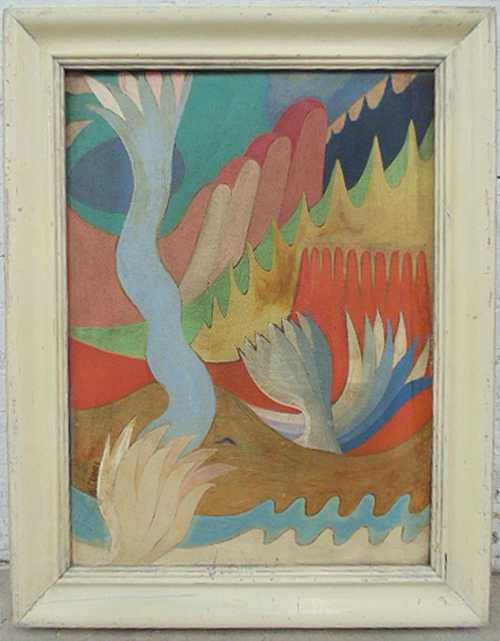
An oil on panel surreal landscape painting by Konrad Cramer sold for $9,000 at an auction held Sept. 8 by Hudson Valley Auctioneers in Beacon, N.Y. Also, a Vargueno desk changed hands for $6,000; a lovely swan planter found a new owner for $2,700; a Longwy Aesthetic plant stand garnered $5,400; a Linke cabinet realized $5,700; an oil on canvas painting by Carl Holty titled The White Vase (1948) attained $5,400; a 1947 Holty work titled Unicorn fetched $2,400; and a Buccellati silver bear made $2,400. Prices include a sliding scale buyer’s premium.
Arts and Crafts chandelier, $26,910, Stair Auctioneers

A W.A.S. Benson English Arts and Crafts copper and brass three-light chandelier sold for $26,910 at a Decorative Arts Auction held Sept. 5 by Stair Auctioneers & Appraisers in Hudson, N.Y. Also, an Aesthetic Movement ebonized hall chair attributed to Gustave and Christian Herter coasted to $11,700; a glazed stoneware faceted cauldron by Paul Chaleff (b. 1947) finished at $5,560; a pair of Pompeian-style bronze tripod floor lamps with alabaster shades went for $9,945; and a Minton porcelain garden seat hit $1,755. Prices include a 17 percent buyer’s premium.
Qing Dynasty vase, $24.7 million, Skinner
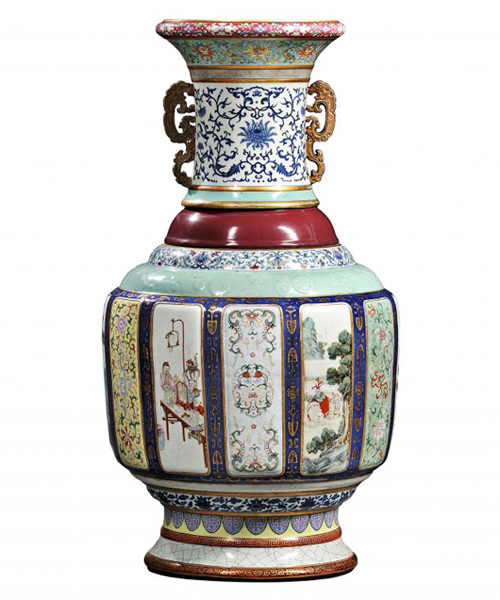
A monumental Fencai Chinese Imperial Qing dynasty vase sold for $24.7 million at an Asian Works of Art Auction held Sept. 17 by Skinner Inc. in Boston. It was the most ever paid at auction for a Qing dynasty vase in the U.S. It is believed the Chinese Emperor ordered the vase made. It was fired at the Jingdezhen kilns under the direction of the superintendent Tang Ying (1682-1750). The National Museum in Beijing is home to the only other known example in the same size and decoration. The price includes a 23 percent buyer’s premium.
Marklin three-piece train set, $6,000, Pook & Pook

A Marklin three-piece tin windup train set consisting of an engine, a tender and a Speisewagen dining car sold for $6,000 at a Christmas in July Toy Auction held July 15 by Pook & Pook Auction in Downingtown, Pa. Also, a 19-inch-tall French Tete Jumeau bisque head doll, beautifully dressed and with a jointed composition body, realized $3,120; a set of 12 carved and painted wooden soldiers, each one 6 1/2 inches tall, brought $2,880; and a Majestic Mfg. Co. steel iron and tin salesman’s sample stove made $4,320. Prices include a 20 or 23 percent buyer’s premium.
JFK wartime letters, $200,000, RR Auction
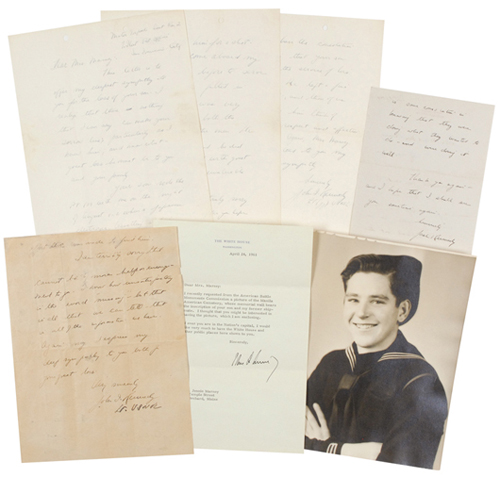
A collection of letters from John F. Kennedy to the family of a lost PT-109 crewmate sold for $200,000 at an auction held Sept. 17-18 by RR Auction in Boston. The letters were sent by JFK to the family of Harold W. Marney, who was killed when the PT-109 was sunk by a Japanese destroyer. Also, Gen. Dwight D. Eisenhower’s World War II bomber jacket hammered for $93,000; and a famous photo of Albert Einstein sticking out his tongue, signed by the renowned genius, hit $125,000. Prices include a 25 percent buyer’s premium.
Ty Cobb cigar tin, $18,720, Manifest
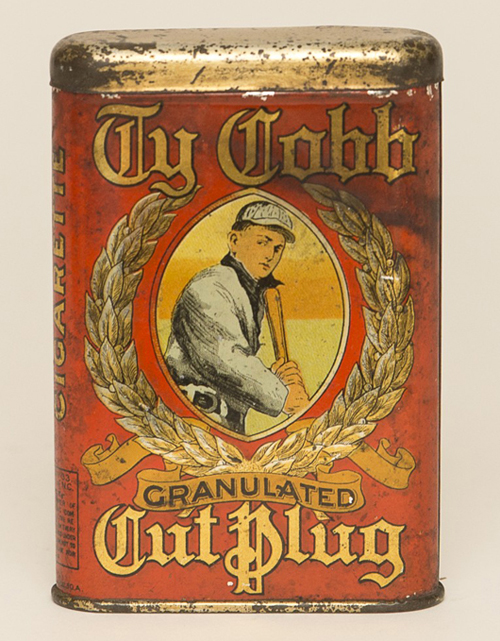
A Ty Cobb cigar tin, one of fewer than 20 known, sold for $18,720 at a premiere sale held July 12-13 by Manifest Auctions in Greenville, S.C. Also, a Santa Fe Railroad “The Scout” single-sided sign, 20 inches by 40 inches, realized $11,700; a round H.P. Hood & Sons milk sign with cow graphic and original grommets, 30 inches in diameter, rose to $9,360; a Buffalo Brewing Co. Bohemian Beer charger, 24 inches in diameter, fetched $8,190; and a Five Brothers’ pipe tobacco store display bin went for $3,900. Prices include a sliding scale buyer’s premium.
British School landscape, $30,000, Carlsen Gallery
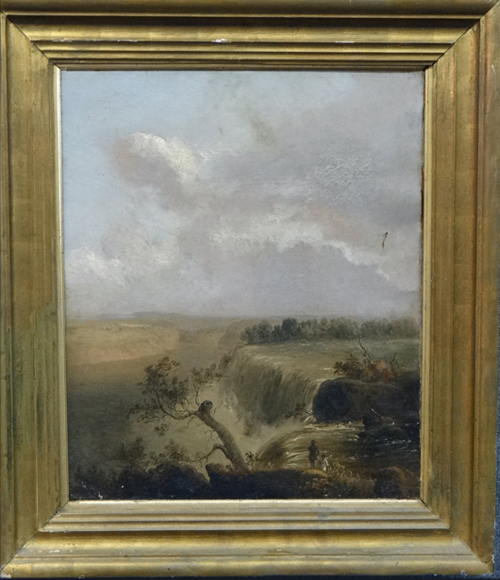
A 19th century British School landscape rendering with a waterfall sold for $30,000 at an auction held Sept. 14 by Carlsen Gallery Inc., in Freehold, N.Y. Also, an oil on canvas by Samuel Coleman, titled Coast of North Africa, chalked up $17,000; a signed oil on canvas by Paul Weber, titled Cathedral Rocks Yosemite, climbed to $15,000; an early 19th century classical marble bust and pedestal brought $14,000; and a tangerine and red 1969 Porsche 912 sports car roared off for $9,000. All prices quoted are exclusive of a sliding scale buyer’s premium.
Tiffany Studios lamp, $56,500, Clars Auction
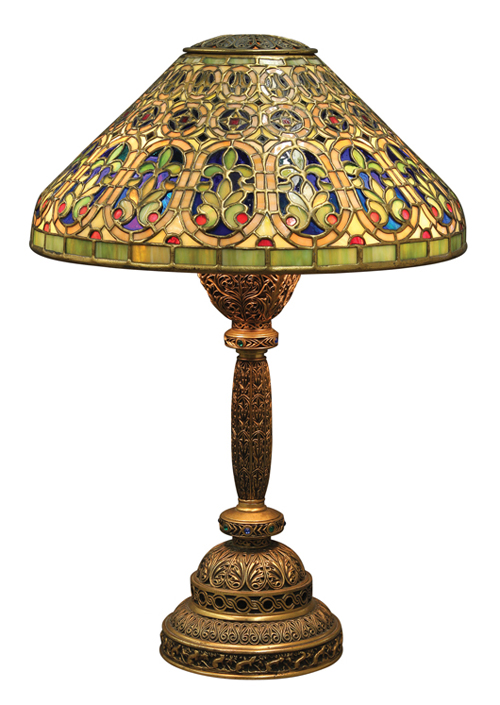
A Tiffany Studios (N.Y.) “Venetian” desk lamp, made circa 1910, sold for $56,500 at a fine art, decoratives & jewelry auction held Sept. 13-15 by Clars Auction Gallery in Oakland, Calif. Also, an original painting by Leonor Fini (French, 1908-1996), titled Dialogue Impossible, also rose to $56,500; a pair of French urns in the Neo-Classical style, attributed to Henry Dasson (Paris, 19th century), gaveled for $32,000; and a large patinated in metal abstract tree trunk table by Silas Seandel (b. 1937) achieved $26,000. Prices include a 19 percent buyer’s premium.
Howard Terpning painting, $1.5 million, Jackson Hole
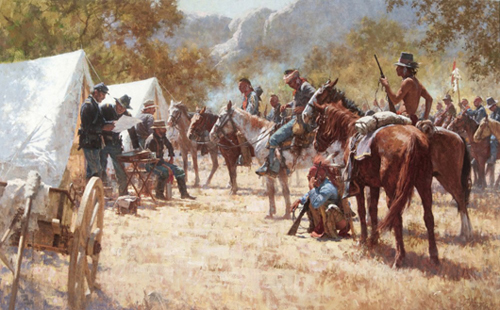
An original painting by Howard Terpning, titled Major North and the Pawnee Battalion, sold for $1.49 million at Jackson Hole Art Auction’s eighth annual live auction held Sept. 13 in Jackson Hole, Wyo. Also, a rendering by Carl Rungius, titled Moose, got snapped up for $546,250; Bob Kuhn’s Red Fox on Patrol changed hands for $263,250; Martin Grelle’s painting titled Strategies (2014) realized $263,250; and Richard Schmid’s Yellow Roses went to a determined bidder for $187,200. Prices include a sliding buyer’s premium.




